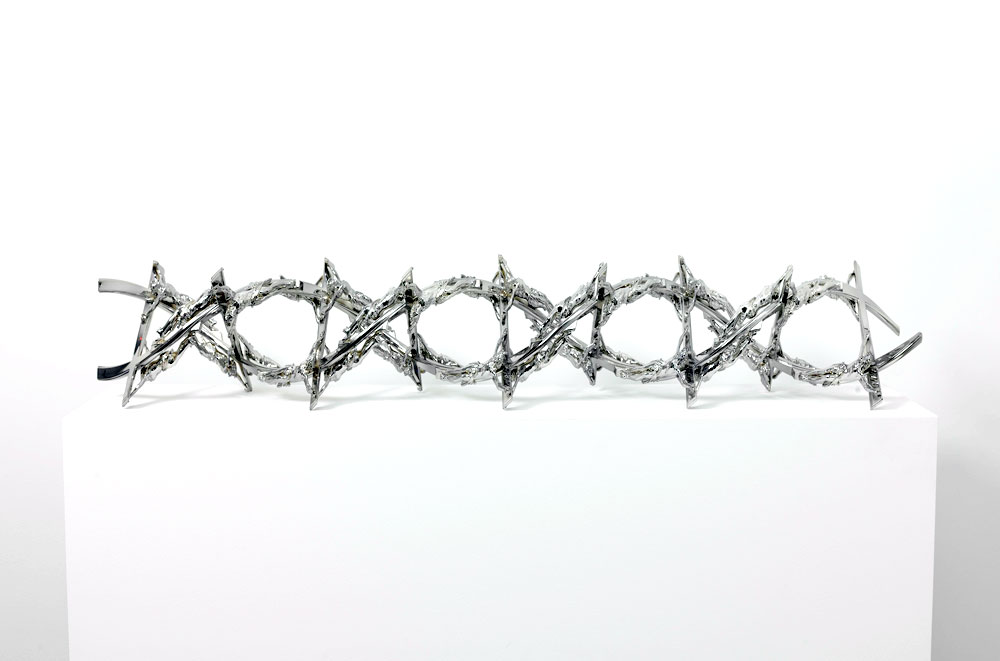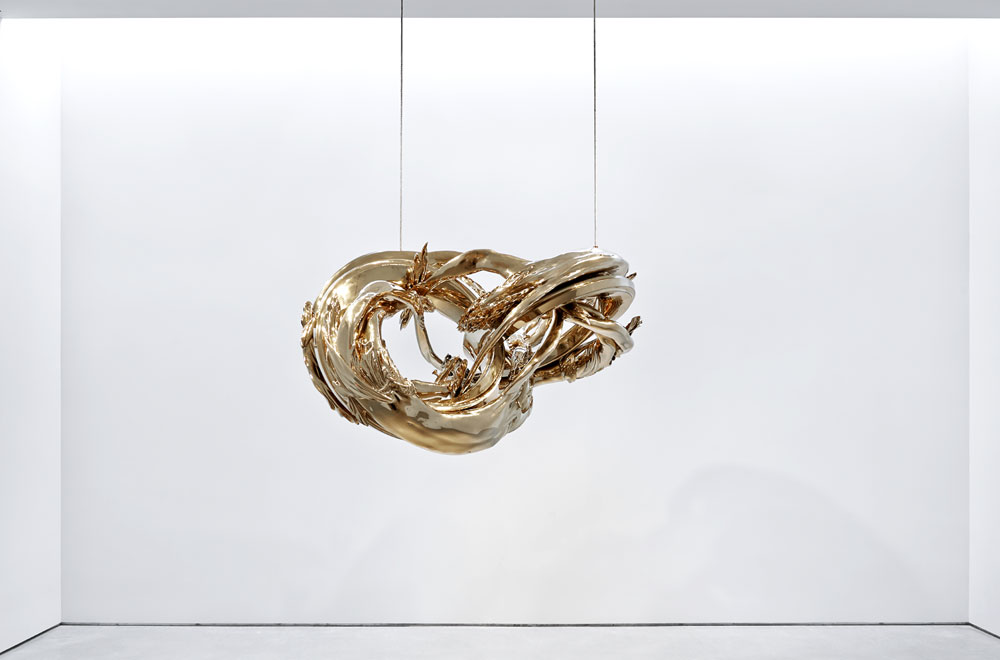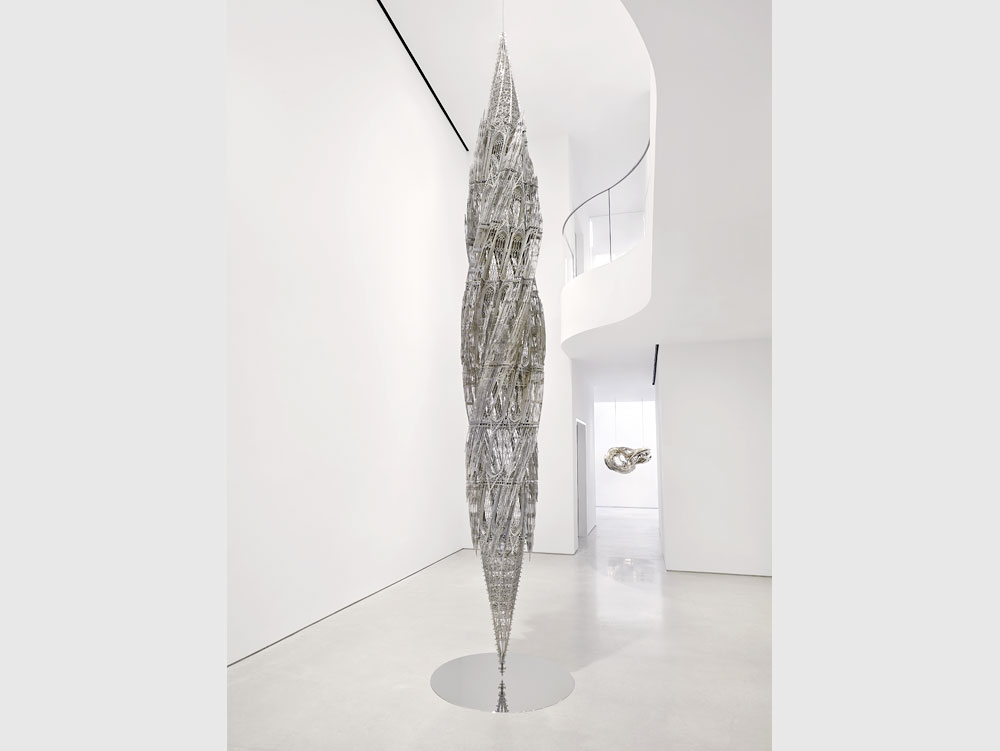WIM DELVOYE
Two Gothic spires morphed in perfect symmetry, melding into each other in twisting torsion, with one pointing upward and the other down. Wim Delvoye’s Suppo (scale model 1:2) hangs in graceful stillness—and like the late Gothic architecture it recalls, it is serenely imposing yet has an ethereal quality. You can see through its crenellated spires, pointed arches, and glassless rosaries, but its scale exceeds you. Most interestingly, the work holds any number of contradictions in surreal suspension: stainless steel against bending plasticity, modern design production versus Medieval tradition, Futurist and Gothic æsthetics.
This theme of suspended contradictions and competing worldviews applies to the other works in the show as well. Dual Möbius Quad Corpus is a polished bronze sculpture of four Christ figures on a cross, which bends back into itself in the mind-puzzling shape of a Möbius strip. Jesus and mathematics—something of an odd couple. The nature of such a shape is that its center is logically impossible to orient. It also means that while the elongated bodies seem to hang suspended both inside and out of the cross, they are actually all on the same plane. There is no stable dividing line between interior and exterior with a Möbius strip, and you can always eventually end up in the same place you started. These geometric tricks aside, it is the faces, however, that are the most striking part of the sculpture. There is something anamorphic about them, as if not meant to be seen from head-on. Their features become two-dimensional and otherworldly, and float in material and immaterial balance.
Another work, Double Helix Crucifix alternating Current 13 cm x 91 involves more Christs, this time in multiplying crucifixions along a stainless steel DNA-like double helix structure. The suspended contradiction here is between a scientific explanation of the immanent nature of our terrestrial construction and coding from within, and one of the major competing explanations for our origins in transcendent extra-terrestrial construction and coding from without. Then there is Daphnis & Chloë Rorschach, a series of precious Rococo-like objects, in nickeled bronze, which double as three-dimensional Rorschach blots of alternatingly-possible butterflies and vaginas, uniting psychology, Greek mythology, and more conceptual tension between inner versus outer explanations of our reason for being.
The Belgian Delvoye has Catholicism and Surrealism in his bones, which he uses to great effect. These works are visually compelling and a joy to stand in front of, especially the large double spire. They clearly also point to two profoundly historical and competing directions, which continue to inform us whether we like it or not: theology and modernity. Their contradictions are not always completely unresolvable. Sometimes they get resolved in uninteresting or cynical ways (see today’s most powerful monotheism: Capital). Other times they seem to collapse into each other—for instance, when theoretical physics leads us to otherworldly and undecidable conclusions. The point may be to marvel at the ways traditions continue to inform us, without using them to foreclose better futures in all sorts of fundamentalisms, and to pay attention to our residues of faith and belief, especially in their secular workings. This is what the French philosopher Jean-Luc Nancy (via Theodor Adorno and Michel Deguy) calls “prayer demythologized,” an oxymoronic construction much like Delvoye’s objects, which in sheer physicality and paradoxical quotation may be designed to keep the unresolvable open.
“Wim Delvoye” runs through July 26 at Sperone Westwater, 257 Bowery, New York. All images courtesy of Sperone Westwater, New York.
Arnaud Gerspacher is a New York-based writer, curator, and researcher. He is a PhD Candidate in art history at the CUNY Graduate Center, writing a dissertation on animals, posthumanism, and ecology in art.




















